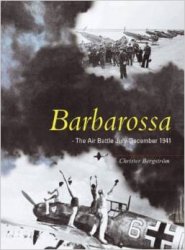Several texts dealing with military matters have been translated into
English, and their varying degrees of indebtedness to ancient tactical manuals
assessed. Essentially, the Byzantines borrowed extensively but made
adjustments to fit current circumstances, with Emperor Nikephoros II
Phokas issuing fresh prescriptions on, for example, equipping, training
and deploying heavy cavalry and other, lighter categories of cavalrymen.58
Another work, on siege warfare, makes classical techniques of building and
operating siege-engines readily visualisable and applicable for present-day
operations against the Arabs.59 These texts mostly date from the decades
following Constantine VII’s reign, registering the switch towards more sustained
offensive warfare on enemy territory. The change is signalled in the
preface to the manual on Skirmishing commissioned by Nikephoros II:
the tactics prescribed here ‘might not find much application in the eastern
regions at the present time’, now that the Muslims are being driven back;
but a written record is desirable, in case ‘Christians need this knowledge’
again, and have to contend with raiders ranging freely across AsiaMinor.60
Another shift in priorities features in Campaign organization, a work envisaging
warfare in Bulgarian territory and assuming that the emperor will
be in command. It probably dates from the earlier part of Basil II’s
reign.61
Similar provision for new circumstances is made in Nikephoros Ouranos’
Taktika, written while he was military governor of Antioch in the
early eleventh century. Ancient military texts together with Leo VI’s and
Nikephoros Phokas’ treatises are supplemented by chapters on, for example,
cavalry warfare and sieges. These chapters, which have been expertly translated,
cover ‘the full range of contemporary Byzantine military operations’
in the region of occupied Syria.62
Prescriptive handbooks could be more discursive. One such, conventionally
termed the Strategikon of Kekaumenos, we have noted above
(p. 67). This contains edifying maxims, tips on household management and
social relationships, and counsel about serving as a judge in the provinces.
Kekaumenos’ bias is, however, towards officers’ training: he had himself
been a senior commander in the mid-eleventh-century army. An English
translation is in preparation, supplementing the Russian translation.63 No
precise analogy to Kekaumenos’ work is known. But it survives in just one
manuscript. Similar sets of instructions could well have been composed by
commanders or civilian officials, without the good fortune of manuscript
survival. In fact, comparable stylistic traits, rhetorical devices and didactic
tone characterise some of the military treatises discussed above; they are also
discernible in Skylitzes’ chronicle. Kekaumenos dismisses unnamed rivals
in stressing that his work stems from ‘authentic experience’, presenting
‘things not in any other Strategikon or any other book’.64 At the same time
he presupposes readers’ familiarity with heroes such as Scipio Africanus
and Belisarius. His work opens a window on under-chronicled Byzantine
officialdom, on men educated in grammar and rhetoric, but not to the
highest level. Opinionated and idiosyncratic Kekaumenos may have been,
but his value-system was probably common to many of the empire’s servants.
They were interested in relating recent developments to the classical
past, preoccupied with issues of technique and policy, yet also disposed to
pass useful knowledge, topped with pieties and worldly wisdom, on to their
juniors in age or status.65
This political culture could act as a bonding mechanism, providing middling
officials scattered across outposts of empire with a common stock of
know-how, anecdotes and semi-learned allusions. A certain esprit de corps
was thereby fostered. But this was no closed body. The military manuals
and other practical works imply concern to introduce newcomers or
successors to the systems they will have to operate.Most also place presentday
norms and practices within the framework of the ancients, still deemed
past-masters. The very fact that the counsel was set down in writing suggests
that processes of training and dissemination went on beyond the confines
of formal education. The attempts at spelling out military techniques in
plain words, simplifying classical terminology, also bespeak ambitions for
learning, for self-improvement, on the part of individuals coming from
outside the gilded circles.
In other words, the instruction manuals themselves constitute evidence of
the means whereby the upwardly mobile could hone their military and other
skills, gain a certain polish, and ultimately rise higher in the empire’s service,
especially during its era of expansion, the tenth and eleventh centuries.
They would need Greek to understand the manuals and most would be
Byzantine-born. But individuals among neighbouring elites, or visitors to
the empire, could manage some Greek, written as well as spoken. Didactic
texts would have been of use to, for example, the young Norman noble
who learnt not only Greek at court but also veterinary medicine for horses
and birds in the mid-eleventh century.66
Paradoxical as it might seem, texts covering military matters could
become available to outsiders. In fact a section in Kekaumenos’ Strategikon
directly addresses a toparch, a local potentate in the borderlands.
He is advised to be wary of the emperor’s blandishments, paying just
one visit to Constantinople if he values his independence. The fate of
an incautious toparch is recounted, by way of warning, and another section
features the wiles of one of Kekaumenos’ own ancestors, a toparch in
the Armenian borderlands who outwitted imperial commanders.67 Thus
a senior military officer could proudly recall Armenian family roots and
envisage sympathetically a contemporary toparch’s viewpoint. There is no
reason to doubt Kekaumenos’ overriding loyalty towards the emperor, or
that his prime self-identification was Roman. But Kekaumenos had not
wholly relinquished ties with another culture, an alternative identity, and
in that sense he exemplifies the multiple or mutable personae of many
serving in the empire’s higher echelons, especially the armed forces. His
‘life and opinions’, while personal to the point of idiosyncracy, do much
to explain Byzantium’s sinews of governance (see above, pp. 15–16). Kekaumenos’
injunctions, with other more technical treatises, are now becoming
available to Anglophones; in reading these works, the newcomer to
Byzantium can gain a direct impression of what it was to make oneself a
Roman.




 World History
World History









